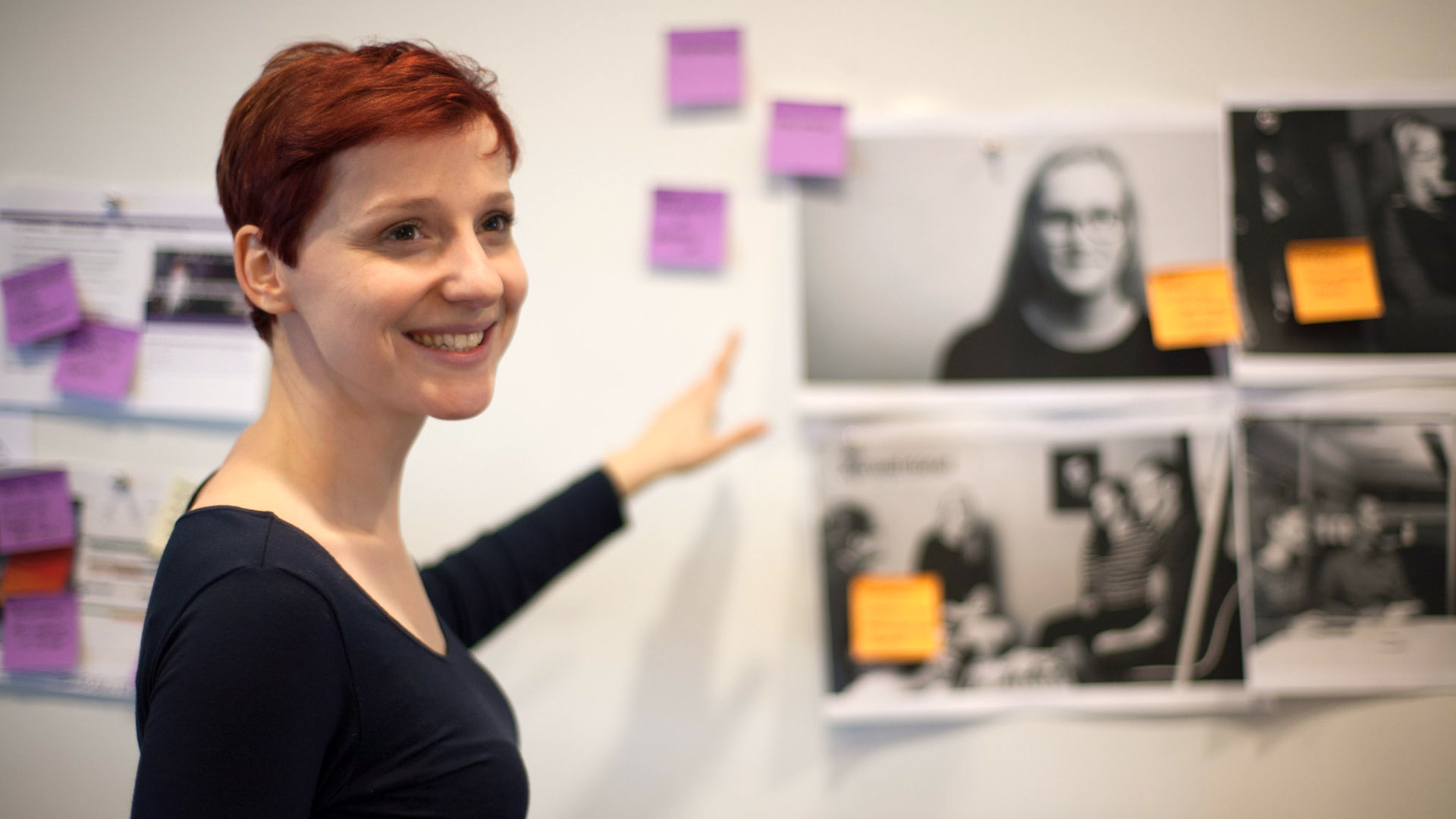
Wednesday 13 May 2020
Fluxible speaker spotlight: Knitting inclusive experiences together with Janice de Jong
Although Fluxible 2020 has been cancelled, Fluxible TV is on the air. Janice de Jong is one of the speakers on the program and we had the chance to talk to her ahead of her on-air appearance June 4 about designing the user research experience.
In the most recent chapter of her career as a design researcher and foresight practitioner, Janice de Jong has focused on an unconventional realm of user experience: food.
Working with the Canadian government, Janice researched the challenges that refugees experience with food and how to deliver them service solutions. She blends immigration policy, Canadian culture, and foresight analysis into a single work designed to improve the experiences of a very different kind of user: Canadian immigrants.
Her work taught her some valuable lessons as a qualitative researcher, particularly in her approach to research participants.
“By being a researcher, you are also designing experiences. You’re designing the experiences for the stakeholders, you’re designing the experiences for the designers, but most importantly, you're designing the experience that the participants go through,” she says. “How can we make sure that they’re as comfortable as possible, make sure that they’re as aware as possible of what we’re doing and be informed about the process and comfortable and willing to share with us?”
Janice has upheld a holistic approach to qualitative research throughout her career. When she helped lead a workshop at Fluxible in 2015, she guided attendees through developing their own research plans. Though she enjoys sharing her knowledge of UX research, she has also learned a great deal herself. She says that the field of design is “a lot less restrictive” than it was 10 or 15 years ago.
However, when asked what sets the Kitchener-Waterloo region apart from other design communities, Janice explains how there are still some limitations that designers face within KW’s strong STEM culture.
“In this area in particular, because it has such a strong engineering driven background, and that still very much drives the city and the local industry, I feel like design has to fight a little harder to have a seat at the table,” she says.
Because of this, she says she often finds more opportunities as a foresight practitioner in Toronto. She nonetheless loves Waterloo Region and says she is “very grateful for this area and the promise that it has,” having lived here for over 10 years herself.
The struggle that researchers and designers have in convincing organizations of the value of their work is not an uncommon one. An organization may already have a set idea of who their demographic is and what their needs are. When organizations invest fewer resources in exploring the identities of their users, some users can become excluded from the product experience.
“You usually have to have a pretty darn good reason for excluding someone from your research,” says Janice. “And I think that is something we tend not to do in the tech world, partially because a lot of times we’re dealing with the private sector and you can say, ‘Well I have my target market and my segment and therefore I’ve predesigned who is in and it doesn’t matter who is out. Who is out is who we’ve already decided is who is out.’ ”
To close this gap, Janice has striven to become more inclusive in her research. Part of that is recognizing that inclusive design extends beyond accessibility. In striving to research more inclusively, she starts with one question: “What’s the worst case scenario and for whom? Who would have the worst experience and what would be the worst thing to happen to them, and who is that person?”
The topic of inclusivity has become so popular that it has also unexpectedly extended into another interest in her life: knitting.
“There was a very difficult series of conversations the knitting community had of realizing who was included and not included in the conversation, whether it was deliberate or not, and it was difficult, but I think it’s made the knitting community a lot more diverse, interesting, dynamic, friendly,” she explains.
An avid knitter and gardener, Janice laughs at how her traditional hobbies contrast her work as a foresight analyst. “Looking back on these traditions like knitting and gardening and being in touch with these things is just as interesting to me as thinking about how we might live in the future,” she says.
Knitting and gardening are much more tangibly rewarding, while the work of her research or consulting can take months, or even years, to manifest itself in a product or service. Speaking about these products and services, Janice wishes that designers would consider the broader impact that a product experience can have on a society.
“As designers, we have a responsibility to think beyond the product level experience, like what you’re building, and consider the systemic impacts of it.... I think if designers took in mind the products they were working on and the impact they made on society, I think we could benefit a lot more,” she explains.
Fluible 2015 was a place where Janice was able to meet like-minded UX professionals who also care about the broader influence that UX has. She really enjoyed her experience, and is happy with the prospect of returning to the conference in the future.
“I think what I really enjoyed about Fluxible was the sense of being part of a community,” Janice says. “As a researcher, and since I’m a consultant now, it can be a more solitary experience, so to get rejuvenated by being around other people who do the same things you do but perhaps in a different way or in a unique way is just super enlightening.”
Fluxible TV goes on the air June 4. Registration is now open.